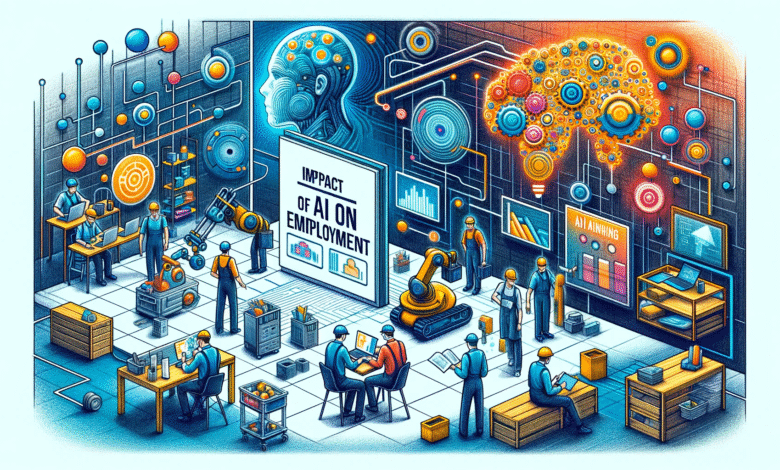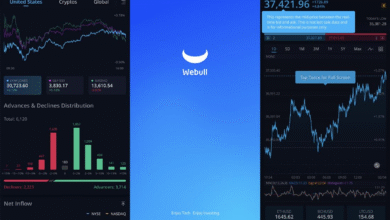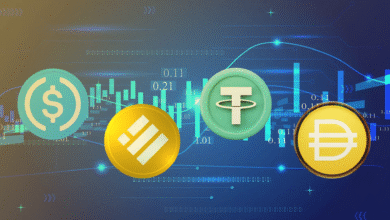AI Job Market Impact: Young Tech Workers Face Challenges

The impact of AI on the job market is becoming increasingly evident, particularly among young tech employees. As organizations integrate technology and automation at a rapid pace, issues such as tech workers’ unemployment are surfacing more prominently. A recent analysis from Goldman Sachs reveals that generative AI is not merely a buzzword but a significant factor behind the recent hiring slowdown in the technology sector. Reports indicate that, since the beginning of 2023, unemployment rates for workers aged 20 to 30 have surged by 3 percentage points, highlighting the vulnerability of this demographic. As automation continues to reshape industries, understanding the implications of AI job market impact will be essential for future workforce planning and policy-making.
Exploring the ramifications of artificial intelligence on employment trends reveals a transformative shift, especially affecting younger professionals in the tech sphere. This technological evolution, characterized by significant changes in workforce dynamics, poses challenges such as heightened rates of joblessness among digital natives. With the advent of generative AI and automation, many companies are reconsidering their hiring strategies, often prioritizing efficiency over adding junior staff. Consequently, as automation grows capable of replicating tasks once performed by humans, the urgency to address these shifts becomes critical. The discourse surrounding AI’s role in the workforce not only reflects current economic concerns but also prompts proactive measures to mitigate potential job losses in the future.
The Impact of AI on Young Tech Employees
As the landscape of the tech job market evolves, young tech employees are facing unique challenges due to the rapid integration of artificial intelligence. Economists, including those from Goldman Sachs, point out that individuals aged 20 to 30 have seen a significant uptick in unemployment rates, which rose by 3 percentage points recently. This demographic is particularly vulnerable to the effects of automation and AI technologies, as their roles often consist of routine tasks that AI can easily replicate. Consequently, the influx of generative AI has heightened concerns about job security among these young professionals.
With the advent of generative AI, many companies are reassessing their workforce needs. The hesitance to hire junior employees suggests that businesses are prioritizing skilled workers who can manage and innovate with AI technologies. Young tech workers, who are typically in entry-level positions, may find themselves at a disadvantage as employers look for ways to streamline their operations. This shift not only impacts job availability but also slows career advancement for younger employees who traditionally rely on entry-level positions as stepping stones toward more senior roles.
Moreover, the hiring slowdown within the tech sector reflects broader trends resulting from the adoption of AI. Many employers are taking a cautious approach, temporarily halting recruitment or even downsizing teams as they navigate this technological shift. The fear of automation job loss looms large over the younger workforce, as they grapple with the uncertainty of job prospects in an increasingly AI-driven environment. As businesses become more reliant on generative AI, young tech workers may need to adapt through continuous learning and skills enhancement to remain competitive.
In this evolving job landscape, it’s crucial for young tech employees to develop skills that complement AI rather than compete with it. Emphasizing soft skills, creative problem-solving, and specialized knowledge in areas less likely to be automated could be key strategies for these professionals. As they strive to secure their positions in a rapidly changing job market, ongoing education and adaptation will be essential for long-term career sustainability.
Generative AI and Automation Job Loss Concerns
The rise of generative AI has ignited a fiery debate about its potential to displace jobs, particularly in the technology sector. As technologies like OpenAI’s ChatGPT demonstrate capabilities akin to those of human workers, many tech employees face existential threats to their roles. Reports by industry leaders indicate that generative AI is increasingly capable of performing tasks traditionally assigned to junior staff, leading to fears of automation job loss. This concern is particularly relevant for young employees, whose roles are often the most vulnerable to technological substitution.
As organizations progressively integrate AI into their workflows, the repercussions for employment levels are becoming evident. For instance, tech CEOs are now more cautious about hiring, often opting to delay onboarding new talent until they can determine the precise impact of AI on operations. This AI hiring slowdown may signal an adjustment period where companies assess how to balance human capital with the efficiency that AI promises. The fear among younger tech workers that they may become the casualties of this transition is palpable, as they consistently seek opportunities to get their foot in the door.
The Goldman Sachs economist Joseph Briggs anticipates that if AI adoption accelerates beyond his projections, a staggering 6% to 7% of the workforce could face job loss due to automation. This statistic not only highlights the enormity of potential job displacement but also underscores the urgency for young employees to prepare for a labor market transformed by AI. Diversifying skill sets, specializing in critical areas, and enhancing adaptability in the face of change will be vital for young technology professionals.
Furthermore, the looming prospect of artificial general intelligence (AGI) could introduce even greater disruptions in the job market. The threat of widespread labor replacement raises critical questions about the future state of the workforce and the types of skills that will be in demand. As younger tech workers navigate this unsettling landscape, staying informed about industry trends and fostering resilience will be paramount to thriving amidst the upheaval caused by AI and automation.
Understanding the AI Job Market Impact
The AI job market impact has become a topical issue, marked by significant changes in hiring practices and employment rates, especially among young tech workers. As generative AI shapes the workforce, tech companies are evaluating their staffing needs more critically than ever. This shift has led to a palpable hiring slowdown as firms weigh the balance of maintaining human employees against the efficiency gains offered by AI. The implications of this trend are multifaceted, potentially leading to an imbalance in the job market for newer entrants looking to establish themselves in their careers.
In particular, the influence of generative AI on tech employment statistics cannot be overlooked. With indications suggesting that many of the roles occupied by younger employees may be at risk, industry experts emphasize the necessity for adaptation and skill development. As traditional job roles become automated or transformed, it is crucial for young tech professionals to embrace lifelong learning and invest in skills that align with the evolving demands of the industry. Failure to adapt could jeopardize their chances for job placement, leaving many of them to compete in a contracting market.
Moreover, analysts suggest that while AI’s impact on the job market is starting to emerge, it’s not yet uniformly felt across all sectors. Companies are still in the experimental phases of integrating AI into their operations, which means full-blown disruptions may be on the horizon. Therefore, understanding the nuances of the AI job market impact is essential for both employers and employees. Companies need to strategize around AI integration while also considering the implications for their current workforce and the pool of upcoming talent.
The future of the AI job market hinges on various factors, including technological advancement, regulatory frameworks, and societal acceptance of AI in the workplace. Young tech employees are at the forefront of this transition, facing the highest stakes as the landscape shifts. To remain competitive, they must navigate these changes with agility, focusing on developing unique skills that complement AI processes, ensuring they are not left behind in this rapidly advancing industry.
Hiring Slowdown in the Tech Industry
The hiring slowdown in the tech industry has become a notable trend amid increasing concerns about the integration of AI technologies. As companies reassess their strategies in light of generative AI’s capabilities, many have opted to freeze hiring or reduce staff numbers to avoid overextending their resources during this transition. This shift has created uncertainty for young tech employees entering the workforce, especially those in entry-level positions that are most vulnerable to automation.
This slowdown comes in stark contrast to the previously booming tech job market, where a steady increase in employment could be expected each year. Now, with the decrease in hiring rates and the rise of AI, many entry-level candidates are left scrambling to find job opportunities. Reports indicate that the percentage of tech workers aged 20 to 30 unemployment has climbed significantly, which raises alarms about the future of this demographic within the sector. Companies must balance the need for efficiency through AI with the importance of nurturing the next generation of tech talent.
As organizations evaluate their workforce strategies, the emphasis on hiring experienced professionals over fresh graduates could deepen the impact of this slowdown. Not only do young tech employees struggle to secure jobs, but they also face increased competition from seasoned workers who may be transitioning from different fields or roles. Therefore, the hiring slowdown serves as a wake-up call for young individuals to enhance their skill sets and diversify their expertise to stand out in a crowded job market.
Addressing this hiring slowdown requires a collective effort from companies, educational institutions, and young professionals. Organizations need to create pathways for entry-level employment while offering training programs that align with the evolving tech landscape. Simultaneously, young tech employees must prioritize skill development and adaptability to thrive within the changing landscape. Embracing continuous learning opportunities can ensure these workers remain relevant and competitive, regardless of the fluctuations in hiring trends.
Adaptation Strategies for Young Tech Workers
With the advent of artificial intelligence and the subsequent changes to the job market, young tech workers must develop effective adaptation strategies to navigate the uncertainty that lies ahead. As generative AI reshapes roles and responsibilities in various technical fields, it becomes essential for these professionals to proactively enhance their skills. Continuous learning, professional development, and embracing new technologies can empower young employees to remain competitive despite the challenges posed by AI’s rise.
For tech professionals entering the workforce, investing in specialized skills that complement AI technologies could provide a competitive edge. Areas such as data analysis, AI ethics, and human-computer interaction are becoming increasingly relevant, as businesses seek employees who can effectively collaborate with AI systems. Additionally, developing soft skills—like communication, emotional intelligence, and creativity—helps young workers stand out in a market where technical skills alone might not suffice.
Moreover, building a robust professional network is crucial for young tech employees navigating these tumultuous times. Engaging with mentors, participating in industry events, and connecting with peers can facilitate knowledge sharing and create new opportunities. Networking can lead to collaborations that explore innovative applications of AI while maintaining a focus on human-centered approaches. As they foster these connections, young professionals not only enhance their job prospects but also contribute to a more vibrant and adaptable workforce.
Ultimately, adapting to an AI-influenced landscape requires agility and foresight. Young tech employees who remain proactive in their career development, continually seek educational opportunities, and embrace networking will be better positioned to thrive in a changing job market. By equipping themselves with the tools needed to work alongside AI, they can seize the opportunities that arise while mitigating the risks associated with automation and job displacement.
Frequently Asked Questions
How is the AI job market impact affecting young tech workers?
The AI job market impact is particularly pronounced for young tech workers, as evidenced by a 3 percentage point increase in unemployment for those aged 20 to 30 since early 2023. The integration of generative AI into the tech industry has led to a hiring slowdown, affecting employment opportunities for younger employees who are often in entry-level positions.
What are the implications of generative AI influence on tech worker unemployment?
The generative AI influence is expected to raise unemployment levels among tech workers, especially younger ones, as automation takes over routine tasks traditionally performed by entry-level staff. Companies are increasingly adopting AI, leading to a strategic shift which often sidelines junior employees, which could result in higher unemployment rates in this demographic.
What evidence is there of automation job loss in the tech sector due to AI?
Evidence of automation job loss in the tech sector includes reports from economists stating that generative AI models can handle many tasks that were previously performed by junior employees. This transformation may lead to job reductions, particularly for positions that are more susceptible to automation.
How does the AI hiring slowdown manifest in the technology sector?
The AI hiring slowdown in the technology sector is manifesting through companies postponing the hiring of junior roles as they integrate AI technologies. This strategic transition aims to optimize operations, often at the expense of young tech employees who are currently affected by rising unemployment.
What long-term effects could we see from AI’s impact on the job market?
Long-term effects of AI’s impact on the job market could include a significant percentage of workers—estimated by Goldman Sachs to be around 6% to 7%—losing their jobs due to automation. Furthermore, the development of artificial general intelligence (AGI) could exacerbate this disruption, creating more opportunities for labor replacement.
| Key Points |
|---|
| AI is influencing the job market, especially among young tech workers. |
| Goldman Sachs economist Joseph Briggs highlights evidence of hiring slowdowns due to generative AI. |
| Unemployment rates for tech workers aged 20 to 30 have risen by 3 percentage points in 2023. |
| While automation has not been widely adopted, a hiring reduction trend in the tech sector is noted. |
| Generative AI models are nearing human capabilities, raising concerns about job losses for younger workers. |
| Many tech companies are delaying hiring junior employees as they incorporate AI into workflows. |
| Joseph Briggs estimates 6% to 7% of jobs could be lost due to AI-driven automation in a baseline situation. |
| Rapid adoption of AI could lead to more severe job losses, especially facing the potential rise of AGI. |
Summary
The AI job market impact is increasingly evident, particularly for young tech workers, as generative AI begins to reshape employment patterns. With the rise of automation, there are growing concerns about job losses, especially for those in the vulnerable age group of 20 to 30. Companies are already reacting to AI’s potential by slowing down hiring, particularly for junior positions, which may lead to a significant shift in the tech labor landscape. As businesses prioritize AI integration over traditional staffing, it is crucial for young professionals to adapt and reskill to meet the evolving demands of the job market. The longer-term implications of AI adoption and the potential emergence of artificial general intelligence could drastically alter job availability, making it essential to monitor these trends closely.




